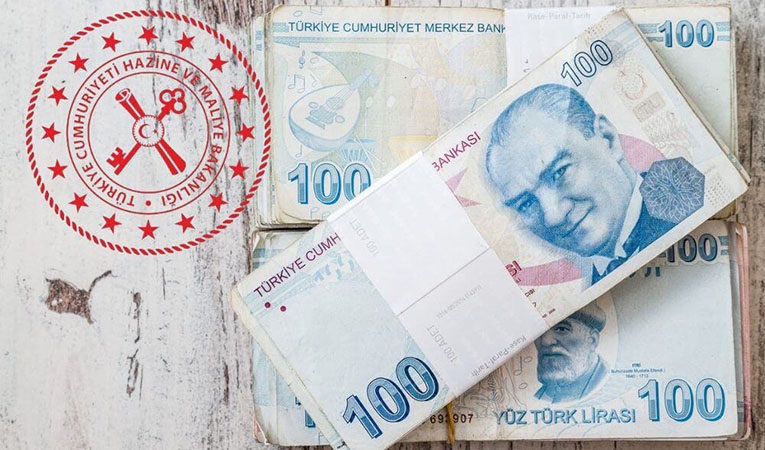
-
BIST 100
 9376,59%-0,18En Düşük9366,18En Yüksek9377,47
9376,59%-0,18En Düşük9366,18En Yüksek9377,47 -
DOLAR
 38,12%0,09Alış38,1131Satış38,1231En Yüksek38,2409
38,12%0,09Alış38,1131Satış38,1231En Yüksek38,2409 -
EURO
 43,57%1,40Alış43,5459Satış43,5873En Yüksek43,6101
43,57%1,40Alış43,5459Satış43,5873En Yüksek43,6101 -
EUR/USD
 1,14%0,80Alış1,1372Satış1,1373En Yüksek1,1385
1,14%0,80Alış1,1372Satış1,1373En Yüksek1,1385 -
ALTIN
 4040,92%2,19Alış4040,05Satış4041,79En Yüksek4042,00
4040,92%2,19Alış4040,05Satış4041,79En Yüksek4042,00
-
BIST 100
 9376,59%-0,18En Düşük9366,18En Yüksek9377,47
9376,59%-0,18En Düşük9366,18En Yüksek9377,47 -
DOLAR
 38,12%0,09Alış38,1131Satış38,1231En Yüksek38,2409
38,12%0,09Alış38,1131Satış38,1231En Yüksek38,2409 -
EURO
 43,57%1,40Alış43,5459Satış43,5873En Yüksek43,6101
43,57%1,40Alış43,5459Satış43,5873En Yüksek43,6101 -
EUR/USD
 1,14%0,80Alış1,1372Satış1,1373En Yüksek1,1385
1,14%0,80Alış1,1372Satış1,1373En Yüksek1,1385 -
ALTIN
 4040,92%2,19Alış4040,05Satış4041,79En Yüksek4042,00
4040,92%2,19Alış4040,05Satış4041,79En Yüksek4042,00
- Anasayfa
- Haberler
- Tüm Haberler
- Konjonktur
Konjonktur
HOPES FOR A FOURTH YEAR The Turkish economy grew by 9.7 percent in the first nine months of 2004. The growth rate, which had been very high during the first half of the year, slowed in the third ...
HOPES FOR A FOURTH YEAR
The Turkish economy grew by 9.7 percent in the first nine months of 2004. The growth rate, which had been very high during the first half of the year, slowed in the third quarter. This slowdown is forecast to continue in the fourth quarter. But, despite this slowdown, the growth rate for the year as a whole is expected to be around 8-9 percent. We shall discover the actual figure for the growth rate when it is announced by the State Institute of Statistics at the end of March.
The growth rate in 2002 was 7.9 percent. In 2003 it was 5.9 percent. The fact that 2004 closed with a growth rate of around 5 percent meant that Turkey added another to the list of times when the economy has grown rapidly for three years in a row.
As can be seen from the adjacent table, there are only a few occasions when Turkey has recorded three years in a row of rapid growth. There has only been one time when the economy has grown rapidly for four years in a row. The growth of the last three years will make it only three times that the economy has grown rapidly for three years in succession. The number of times when it has grown rapidly for two years in a row is eight.
There is a change in the table
In fact, we published this table in the Conjuncture section of our edition of January last year under the title “Third Year Of Growth”. At the time we said that there had been nine occasions when the economy had grown rapidly for two years in a row and two occasions when it had grown rapidly for three years in a row. The continuation of the rapid growth of 2002 and 2003 in 2004 resulted in the changes you can see in the table.
There is a chance that this picture will change in 2005. If growth is more than 5 percent in 2005 then the number of occasions when the economy has grown rapidly for four years in succession will rise to two. Of course, if this happens, then the number of times when it has grown rapidly for three years in a row will be reduced.
The government has set a target of 5 percent growth in 2005. The forecasts of both local and foreign institutions are close to this figure. Indeed, before the announcement of a slowdown in the economy in the second half of 2004, there were many who thought that growth would be more than 5 percent in 2005. But the growth forecasts have been revised downwards after the slowdown became apparent. Indeed, there are even those who doubt that growth will reach the government’s target.
An increase in domestic demand will be difficult
The most important reason give by those who doubt that the growth target will be met this year is that it looks difficult for domestic demand to repeat the increase that it posted in 2004. In 2004 not only did postponed demand reach saturation point but there was no significant increase in real wages, which suggest that domestic demand will be weak this year.
The realization of demand which had been postponed after the crisis of 2001 played an important role in the rapid growth in 2004. There was a significant increase in expenditure on automotives and durable consumer goods in the first half of the year in particular. But in the second half of the year there were signs that this postponed demand had reached saturation point. The measures taken to curb the growing current account deficit (such as the halving of the incentives to scrap automobiles and the increase in the Resource Utilization Support Fund levy on consumer loans), which had increased in parallel with rapid economic growth, and the rise in interest rates triggered by the volatility on the financial markets in spring played an important role in this development.
Although the erosion in real wages which began after the 2001 crisis came to a halt last year, there was no sign of an adjustment to make up for the loss of purchasing power that had occurred in previous years. Most companies increased salaries in line with inflation and there was no significant increase in real wages. This mitigates against a boom in domestic demand.
What will happen with exports?
The weakness of domestic demand was the reason for companies turning to foreign markets after the 2001 crisis and the resultant significant increase in exports. There was an extraordinary increase of over 30 percent in exports in 2003 and 2004 in particular. The doubling in exports played an important role in the rapid economic growth of the last three years.
Continuing this extraordinary growth in exports in 2005 looks difficult as the global economy is expected to slow down a little compared with 2004. Together with the slowdown in the global economy, the volume of global trade is also expected to decline.
In addition, one of the basic reasons for the increase in exports over the last three years despite a decline in the foreign exchange rate has been a rise in productivity. This increase in productivity is the result of an erosion in real wages. The halting of the erosion in real wages suggests that it will be difficult for productivity to increase at the same rate as in previous years.
We still do not have any firm figures but it looks as though exports in 2004 were around $64 billion. The government has set a target of $71 billion for 2005. This means an increase of 13 percent. We think that the growth may be a little higher. Of course, this increase will provide a certain amount of support to overall economic growth but this will not be any more than in 2003 and 2004 when exports rose by over 30 percent.
Hopes rest on investments
Many economists are resting their hopes for growth in 2005 on an increase in investments. The main reason for expectations of an increase in investments is the belief that the decision by the EU to open accession negotiations with Turkey in October will have a positive impact on attitudes towards the future of the country. This development is expected to lead to an increase both in investments by local investors and in a rise in the inflow of foreign capital.
In fact, this is not an unrealistic expectation. But if the opening of accession negotiations is made dependent on a solution to the Cyprus problem, it is possible that foreigners may put everything on hold pending some progress in this direction. The question of a solution on Cyprus it is not expected to come onto the agenda before the spring because there will be both early parliamentary elections and presidential elections in the TRNC. In all likelihood fresh efforts to find a solution to the Cyprus problem will begin after the new government in the TRNC has taken shape.
Such a situation suggests that the expected increase in investments can only start in the second half of the year.
A fourth period of growth
If we evaluate all of the expectations for 2005 together, we see that growth will not be very high during the first half of the year. But we also see that there is a possibility of an increase in growth during the second half of the year.
Growth is expected to be low during in the first half of the year not just because of a slowdown in foreign and domestic demand and foreign investors putting their plans on hold at the same time but because of the arithmetical imperative of the fact of double digit growth in the first half of 2004 when economic output was extremely high. Given the framework of expectations for 2005, it is unlikely that output to be even higher in same period this year. This high baseline means that growth during the first half of the year will be limited, probably less than 5 percent.
If the hopes for an increase in investments are realized, the rate of economic growth will begin to pick up again in the second half of the year. The slowdown in growth during the second half of 2004 will this time have a positive impact on the baseline. Economic growth during the second half of the year may be more than 5 percent.
Five percent growth is possible
We think that the growth rate in 2005 as a whole can be around the government’s target of 5 percent. In such a situation, it remains unclear whether or not the economy will be able to record rapid growth for four years in a row because the criterion we have taken for the definition of rapid growth is 5 percent. Even if growth in 2005 is 4.9 percent, then the three years of rapid growth will come to a halt. In such a situation, equaling the record of 1950-1953, when the economy grew rapidly for four years in succession, will be left to another time.
Of course, even if there is an interruption in rapid growth, a growth rate of 4 percent in 2005 is better than a recession or a crisis. If we take into consideration that the Turkish economy usually moves at a stop-start tempo, we can live with three years of rapid growth being followed by a year of normal growth.
But, in the long term, Turkey definitely needs to establish the conditions that will secure uninterrupted rapid growth. For developed countries an annual growth rate of 3-4 percent is considered high but it is not enough for conditions in Turkey. Research shows that the economy needs to grow by 6 percent a year just to create enough jobs for the young people who are entering the labor market every year. In addition, in order to reduce the army of unemployed from the current level of 2.5 million to an acceptable level it is necessary for growth to be more than 7 percent.
PRIVATIZATION PERFORMANCE IMPROVING
Privatization has been on the agenda in Turkey since the mid-1980s. The first legal amendments in this regard were made in 1984 with the introduction of Law No 2983. But not much progress has been made in the intervening 20 years. In the period 1985-2004 total revenue from privatization was $9.4 billion, while it was possible to sell only half of the companies that were taken into the privatization portfolio in the period 1985-2004. Major privatizations such as Tekel, Tüpraş and Petkim are still pending.
The highest annual income from privatization occurred in 2000 at $2.7 billion. The lion’s share of this revenue came from the sale of the third GSM license. This major sale fuelled great hopes for privatization, but these were dashed by the crisis of 2001.
But there was another improvement in privatization performance in 2004. Total revenue from privatization last year was close to $1.3 billion. With the exception of 2001, this represents the highest ever annual figure for revenue.
In 2004 a total of 10 companies were sold by block sale. Another 68 plants and immoveable assets were sold off. There were two public offers, one in Turkey and one abroad. A further 15 plants and immoveable assets were transferred to the private sector.
The sale which generated the most revenue was the privatization of the alcoholic drinks division of Tekel, which was sold for $292 million. Second came the international public offering of Turkish Airlines, which generated revenue of $126 million, followed by the sale of Bursagaz for $120 million.
The government’s target for 2005 is revenue of $1.6 billion. If it achieves this figure, then 2005 will be the second most successful year in terms of privatization revenue. If we take into account the fact that, for reasons such as the success of the economic stabilization program and progress in the EU accession process, there has been an increase in interest in Turkey we can say that it will be possible to achieve the privatization targets for 2005.
WATCH THE SHORT TERM DEBT!
At the end of September last year Turkey’s foreign debt stock stood at $153.2 billion. Foreign debt had increased by $7.3 billion compared with end-2003. At the end of 2003 the foreign debt stock had stood at $145.8 billion.
In terms of the structure of the foreign debt, what is important is the increase in the short term debt. In the first nine months of 2004 short term foreign debt rose by $6.3 billion to $29.3 billion. The medium and long-term debt rose by only $1.1 billion in the same period,.
When one looks at the ratios for foreign debt one can see that there was a significant increase in short-term debt as a proportion of total foreign debt.
According to a view which became popular after the Asian crisis, in order to avoid problems in foreign debt payments when there is volatility on the financial markets, the Central Bank must have available at least enough foreign exchange reserves to meet the short-term foreign debt. In 2000 the rate of Turkey’s foreign exchange reserves to its short-term foreign debt fell to 78.3 percent. As is well known, then came the crisis of 2001. After the crisis a large proportion of the short-term debt was liquidated and this rate rose. But it fell rapidly during the first nine months of 2004. At the end of September the rate of foreign exchange reserves to short term foreign debt had declined to 118.3 percent.
This is another approach which says that the danger signal is when short-term foreign debt exceeds 25 percent of total foreign debt. In 2000 this rate rose to 23.8 percent and came very close to the danger level. In the years that followed it fell to under 15 percent, but during the first nine months of 2004 it rose to 19.1 percent. Even if it is still some distance from the danger level, the rapid rate of increase suggests that this is something which needs to watched.
Türkiye ve dünya ekonomisine yön veren gelişmeleri yorulmadan takip edebilmek için her yeni güne haber bültenimiz “Sabah Kahvesi” ile başlamak ister misiniz?






